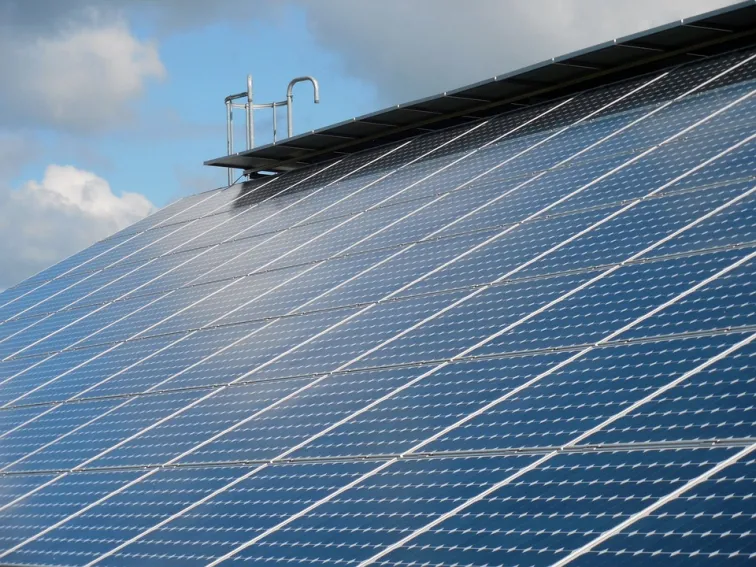
Asia's demand for solar power to sink as key markets shed subsidies and embrace auctions
Demand is set to drop by 18% whilst installations are set to plummet by as much as 30%.
After ten straight years of expansion, demand for solar power in the Asia Pacific is set to fall for the first time in 2018 before stabilising over the next five years as China and other large markets that have been driving growth begin to diminish their solar subsidies and move towards auctions from feed-in tariffs, or FIT. These key countries will continue to generate a lion’s share of demand in the medium term horizon, albeit emerging markets will start to pick up the slack.
Asia-Pacific demand will decline by 18% year over year to 59GW in 2018 from 72GW due to decreasing installations in China, India, and Japan, according to research firm Wood Mackenzie. “The key trend we are seeing is the phase-out of subsidies and transition towards auctions, which is leading to lumpy demand in the region,” said Rishab Shrestha, solar analyst at Wood Mackenzie.
“APAC markets still rely on subsidies but are rapidly transitioning,” said Shrestha. “Remaining FIT markets are expected to transition to competitive bidding completely by 2020. Transitioning from FIT to auctions are expected to deliver the most significant cost reductions.”
In China, traditionally the leader of the pack in Asia Pacific, solar installations are expected to fall 30% in 2018 as it adopts various policy instruments which will diminish subsidies, according to Wood Mackenzie. Beijing’s stopgap measures in May included cancellations of further quotas for utility-scale projects, quota restrictions on distributed solar of 10GW for 2018, reduced levels, and a shift towards auctions.
The new regulation effective June 1 issued by the China’s National Development and Reform Commission and Ministry of Finance introduced an 8 cents (CNY5c) per kWh cut in the nationwide FIT and in the subsidies for PV distributed projects. The new on-grid power tariffs will range between 7.8-11 cents (CNY0.5-0.7) per kWh, whilst subsidies for county-level poverty reduction PV projects will remain steady. The cut in solar subsidies has been seen as a necessary step to prevent the industry from overheating.
Wood Mackenzie noted that China has experienced brisk growth in photovoltaic, or PV, installations over the past few years, with the country meeting its minimum target of 105GW under the 13th five-year plan in 2017, three years ahead of the planned 2020 schedule. Also, from 2016 to 2018, costs decreased at a faster pace than the FIT levels as module oversupply persisted. This resulted in installation frequently exceeding the annual provincial construction quota for utility-scale projects and prompted delays in subsidy payments and curtailment.
However, Shrestha noted that despite the demand contraction, China will remain the largest market for solar installation in APAC and globally through to 2023. Annual installations from 2018 to 2023 are estimated to range between 22GW to 37GW per year, with cumulative installation reaching 314GW by 2023. Wood Mackenzie foresee the top barriers constraining demand aside from reduced subsidies will b a limited quota and subsidy delays, whilst notable drivers will include the country’s top runner programme and the newly improved renewable portfolio standard.
In November, research firm IHS Markit revised its 2018 outlook for solar PV installations in China to 40GW from 37GW, after the country’s National Energy Administration reported that 34.5GW of solar PV power were added in the first three quarters. The agency is currently weighing new PV targets for 2020, with reported proposals ranging from 210GW to 270GW.
“Whilst it appears that China will maintain a steady level of annual installations, quarterly fluctuations will continue, shaped by policy-making decisions,” Holly Hu, senior analyst, solar supply chain at IHS Markit, projecting the country’s total cumulative PV capacity to reach 255GW at the end of 2020, resulting in around 40GW of installations per year in 2019 and 2020. “Further adjustments of these numbers will be made once there is clarity on final policy decisions.”
Hu reckoned that, as expected, the limits on new PV installations announced by the Chinese government in May led to a decline in PV installations in the second half of 2018, although the fall in module prices bolstered demand more than the research firm anticipated and there are policy signals for sustained additions in the next few years.
“With plans to more than double the original 105GW PV target conceived in the 13th five-year plan to be achieved by 2020, the Chinese government has indicated its continued determination to lead the global build-out of renewable energy sources, as well as the manufacturing of solar PV cells and modules,” said Hu. “China’s challenge will be to design a policy to install new PV installations in the most power-hungry regions at a lower cost than other energy sources.”
She expects support for distributed solar photovoltaics with self-consumption, competitive tenders or lowerFITs, and further top-runner auctions to be introduced in line with the new 2020 target but warns that Beijing should avoid a further ballooning of the current $17b subsidy payment backlog.
Japan jumps into auctions
Japan, meanwhile, is transitioning from FIT to auction for projects greater than 2MW, according to Wood Mackenzie, noting that the past two auctions have been undersubscribed due to issues such as tight permitting and grid connection timeline, high cost, grid constraints, and limited land availability. In addition, the submitted bids for the second auction all exceeded the ceiling tariff of ¥15.5/kWh.
“Due to these issues, utility-scale solar installations will decline significantly,” the research firm said. “Nonetheless, distributed solar installations are expected to remain stable as FIT remuneration declines along with cost.”
Fitch Solutions reckoned that Japan’s shift towards competitive auctions for relatively larger solar projects, paired with FIT subsidy cuts for smaller-scale projects, could weigh on the solar power sector, which has grown to 48.6GW in 2017 from 23.5GW in 2013 as the country sought to replace natural gas and coal imports with renewable energy.
“These changes seek to address the increasing concerns over the high costs of subsidising Japan’s solar power expansion amidst elevated retail electricity prices in the market,” Fitch Solutions said. “The transition to auctions will, therefore, seek to curb additional electricity price hikes in Japan.”
As companies and households look to capitalise on the higherFITs currently available, there is potential for a short-term boom at the distributed solar capacity level, similar to that seen in utility-scale solar projects since 2013, the macro intelligence solutions firm added.
The Ministry of Economy, Trade and Industry has also previously proposed that firms which hold permits for solar projects in 2012 to 2014 through the FIT system need to submit their application to connect to the grid by March 2019, or their FIT price guarantees will be reduced from 28 to 36 cents per kWh to 18 cents per kWh. However, power producers and investors have reportedly bristled against the proposed solar subsidy cuts, with some threatening legal action, despite the government’s argument that the cuts are needed to reduce the public burden resulting from the FIT subsidies.
The proposals, which could affect 23.5GW of solar capacity, come as some large-scale solar projects grapple with strict environmental mitigation measures and negotiations with landowners.
APAC still at driving seat globally
Even as major industry shifts in Japan and China, as well as heightened policy uncertainty in India, will serve as headwinds to solar sector demand, these three countries will still generate about 78%, or 279GW, of the 355GW of new solar capacity between 2018 and 2023, according to Shrestha.
To highlight the expected dominance of Asia Pacific in driving demand despite the projected pullback, Wood Mackenzie estimates the region will account for 55% of the global annual new build PV plants in the next five years, resulting in the cumulative capacity increasing by 60% from 222GW in 2017 to 578GW in 2023. By 2035, solar is expected to contribute to roughly 5% of APAC power demand and capture 12% of new power demand growth between 2018 and 2035.
The continued expansion, albeit at a slower rate, is partly attributable to the reduction in PV capital cost globally, according to Shrestha, noting that a 25% reduction in PV capital cost has contributed to the 20% reduction in levelised cost of electricity (LCOE). By 2023, he said the cost reduction in modules and balance of system by 42% and 18% respectively, are expected to lower LCOE to $55/MWh.
In the next five years, average regional LCOE for solar is expected to drop by 25% from $73/MWh presently to $55/MWh by 2023. “Today, LCOE of PV is already competitive against gas in the APAC region. By 2023, PV will be competing closely against coal. Competitive PV prices will continue to unlock new market potential across the region,” including emerging markets, said Shrestha.
Bloomberg New Energy Finance noted that unsubsidised onshore wind and solar have replaced coal as the cheapest power sources in almost all of the world’s major economies, including India and China, but excluding Japan. The firm’s analysis of the LCOE for the second half of 2018 showed the benchmark global levelised cost of new PV (non-tracking) decreased by 13% to $60/MWh, driven mostly by policy revisions in China that caused the utility-scale PV market to contract in the third quarter. Meanwhile, in India, solar and wind plants, now cost half that of new coal plants, BNEF added.
Wood Mackenzie said markets that will benefit most from this trend include those with attractive policies such as a high FIT like Taiwan and Vietnam and with renewable portfolio standards like South Korea and the Philippines. Voluntary procurement will also emerge as a key driver of solar installations as LCOE nears the wholesale power price levels, as seen in Australia, according to the research firm.
Vietnam has seen an influx of solar players, such as German power firm juwi signing contracts in October for 50MW and 30MW solar projects in Ninh Thuan province, in which it will oversee plant operation and maintenance for at least the next five years.


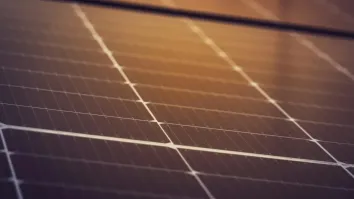
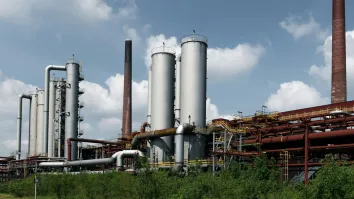
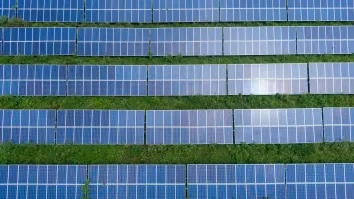
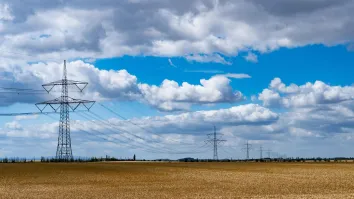













 Advertise
Advertise






